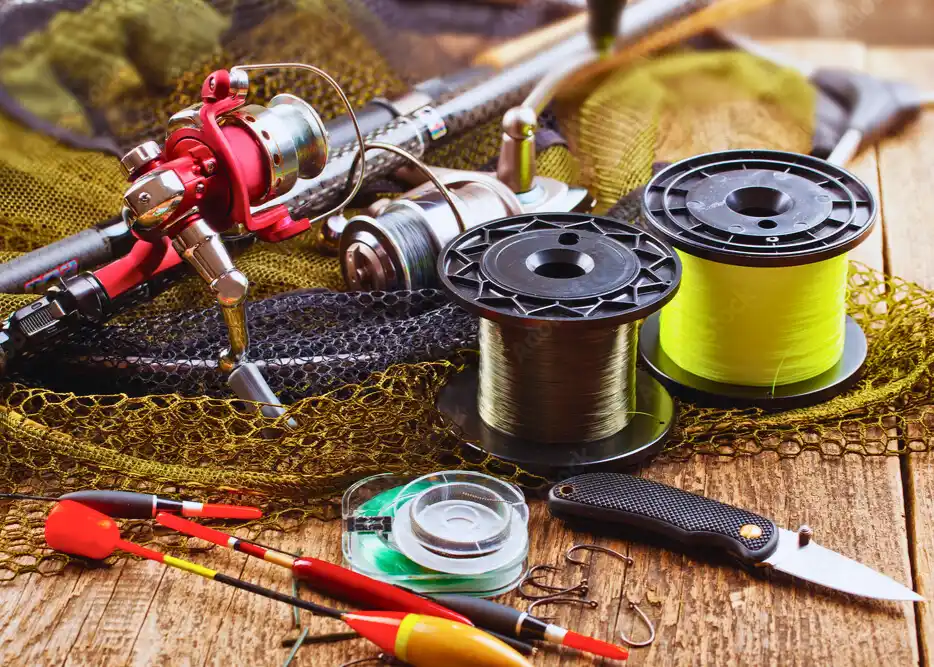
A wonderful morning comes with the peaceful sun rising and the promise of fishing ahead. But before you cast fishing line to make adventures, one foremost step that can break or make your fishing experience stressful or joyful is to fill up your fishing line on a reel.
Whether you are new to this start-up journey or proficient in this art of fishing, you must put a fishing line on your reel to cast a trophy catch. But have you been fearful of line twists, uneven line spooling, and poorly manageable backlashes while filling up the fishing line? Don’t be pissed off, my fellow anglers. This article contains a step-by-step guide, techniques, tips, and various methods to fill up different reels waiting for you.
If you want to gear up for a strife-free day in a local pond or are thinking of an epic offshore excursion, read this article to learn how to confidently put a fishing line on a reel and make your fishing level from good to great.
How to put fishing line on a reel
Loading a fishing line on a reel seems straightforward, but you have the hidden skill to do it perfectly. However, multiple reels used in coarse fishing have their requirements and practices during spooling a fishing line. These reels include:
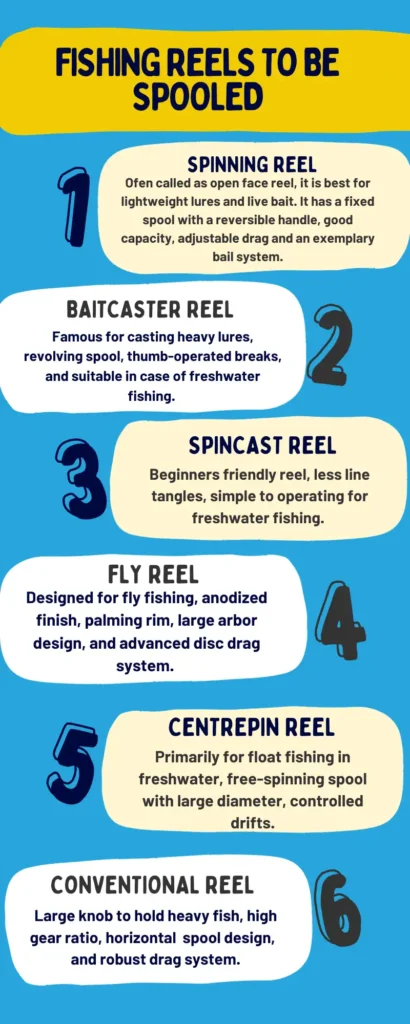
Reels types
Spinning reel:
Often called an Open-face reel, it is best for lightweight lures and live baits. It has a fixed spool with a reversible handle, good line capacity, adjustable drag, and an exemplary bail system.
Baitcasting reel:
Famous for casting heavy lures, revolving spool, thumb-operated breaks, and suitable in case of freshwater fishing.
Centrepin reel:
Primarily for float fishing in freshwater, free-spinning spool with large diameter, controlled drifts.
Spincast/ closed-faced reel:
Beginner’s friendly reel, less line tangles, simple to operate for freshwater fishing.
Fly reel:
Designed for fly fishing, anodized finish, palming rim, large arbor design, and advanced disc drag system.
Electric reel:
It works best in heavy loads in deep water and with a built-in electric motor and variable speed control.
Conventional/ overhead reel:
Large knob to hold heavy fish, high gear ratio, horizontal spool design, and robust drag system.
How to put fishing line on a spinning reel (Alpha and Omega guide)
A spinning reel is the most super choice because of its oversized principles, moveable handles, smoother drag system, and user-friendliness; many anglers face the problem of backlash and line tangles if it needs to be accurately spooled. So, if you are curious about spooling a fishing line on a spinning reel, follow my unique, comprehensive guide.
What do I need?
- A rod for the reel
- A spinning reel
- A scissor
- An electrical tape (as per ease)
- Fishing line ( that matches your reel capacity, drag, and weight)
- A towel or a cloth (for added grip)
Progressive method:
Spooling fishing lines on a spinning reel is easier and more strenuous if never followed well. Two types of spools are available, including deep or shallow spool spinning reels. Still, I recommend to anyone to use a shallow spool spinning reel because they are made to wind thin lines, and I use mono thin lines as backing, so there is no need to put more money on more backing lines and deep spool reels. Here is my method of putting the fishing line on a spinning reel.
Choosing between the right fishing line
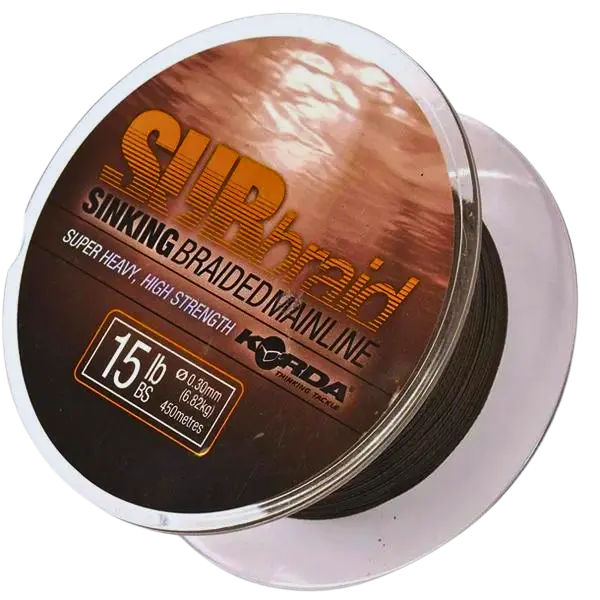
Always select a line that matches the reel capacity, targeted fish, and fishing style. Fishing lines have three categories:
Monofilament line
A line with much stretchability and buoyancy is one of the most favored choices among many anglers like me. These lines hold knot toppingly, have low visibility in the water, are more affordable than other fishing lines, absorb UV rays, and are biodegradable. Still, it has less sensitivity than a braided line. 12-15 pound mono line is enough for big fish.
Fluorocarbon line
A fluorocarbon line is made of a particular type of polymer that contains fluorine and is bought by anglers who want more sensitivity and low visibility underwater. These lines have high abrasion resistance and are denser and faster in water to reach the desired depth.
Braided line
The braided lines are made from synthetic fibers like Dyneema, Spectra, or polymers that are less costly but highly visible in clear and fresh water. A braided line has zero memory, has a good turn in cold weather, has a very thin diameter to cast longer, feels a fish tug easier, and dries soon after a quick fishing trip.
All in all, use the mono line for floating bait, the fluorocarbon line for calm/ shallow water, or the braided line for long casting distances.
Every man gets experienced by learning from his gaffe, and I have no oddity with it. During my early fishing, when I had to fill up the fishing line, I mistakenly filled the whole line with the braid, resulting in line slippage and uneven line outcome. My mistake was ameliorated by my father, who gave an excellent admonition to line up monofilament. It will save costs and keep the line in its place without dereliction. So I almost always use the GURU Dragline (8-10lb) mono line as backing.
Prepare the spool
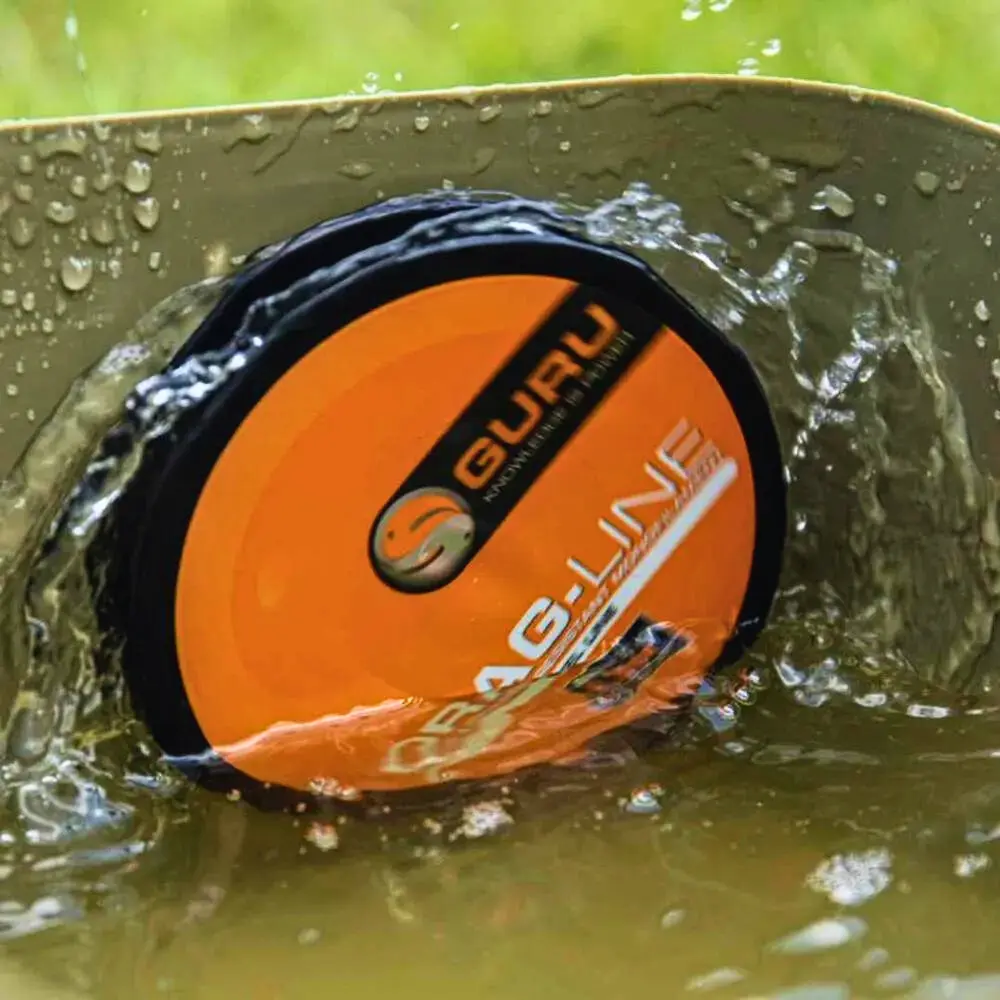
If you are using a bulk fishing line spool, place it on a table or flat surface with the company mono or tag facing up to rotate in the right direction. Your spinning reels frequently move clockwise, so make sure to position a spool so the line unwinds in a counterclockwise position.
Alternative: Placing a spool in a hot water bathtub is a unique technique I heard from my fellow fisherman. I implemented it while spooling a fishing line, and the result was that the line held its place perfectly without any twist and turn.
Open the bail
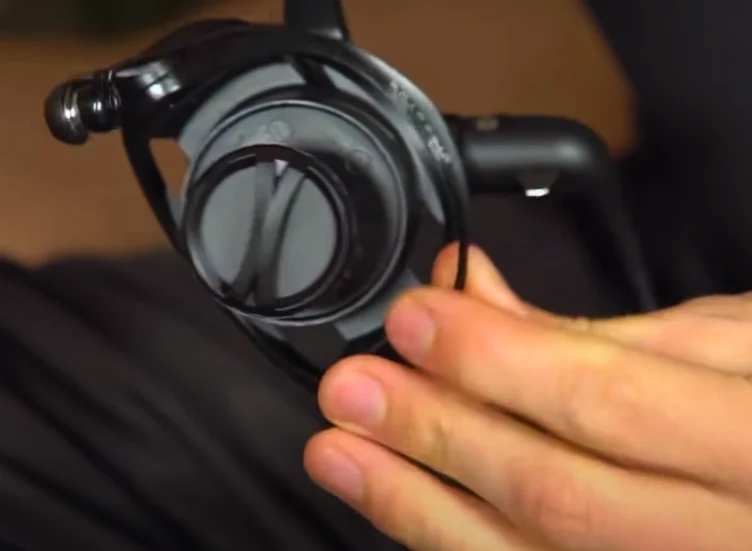
A spinning reel has a distinct element: bail (A metal wire arm that rotates when you turn the handle used to release and retrieve the fishing line). This step most anglers need to remember to do is to open the bail before filling the reel. Let the bail open; otherwise, it can create excessive tension and cause a loop on a spool.
Insert the line through the guides
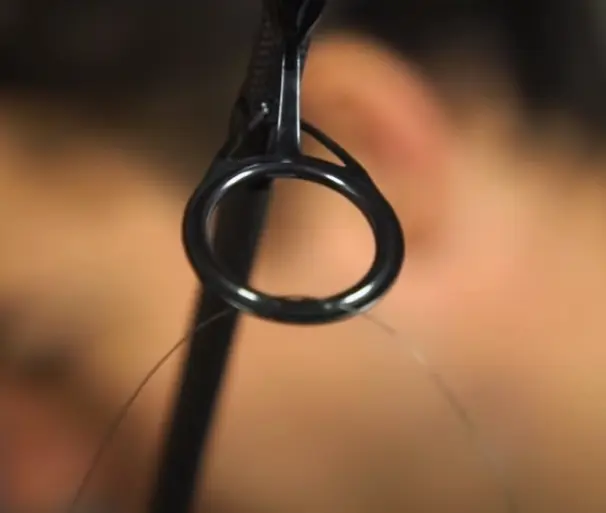
The spinning rods have their guides ( small loops on a rod to target a fish more easily by distributing the line load on all the rods) beneath, so what to do is to insert a line through the first guide of a rod and reach it on a spool. You can string the line through the last guide; it will never affect the casting efficiency.
Tie an arbor knot
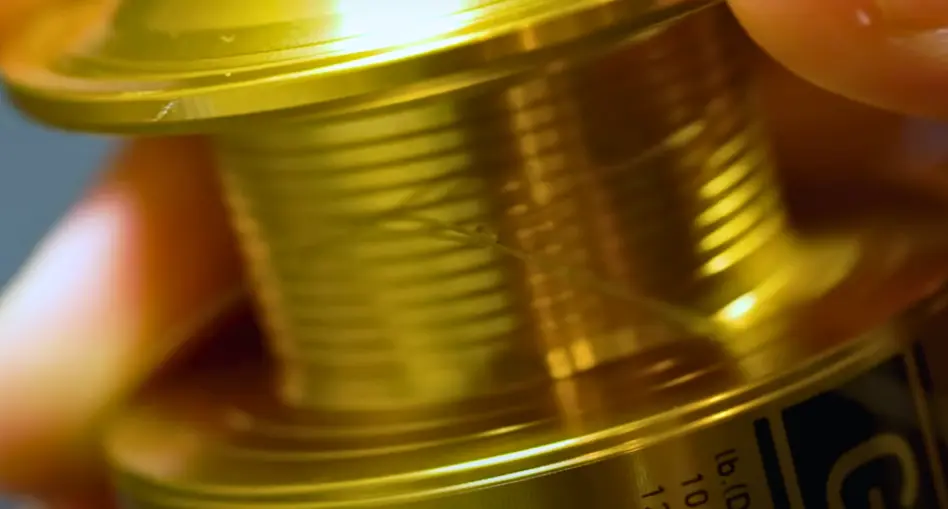
Tether an arbor knot around the spool. Why do anglers mostly recommend arbor knots? That’s because it ties a line to your reel and is one of the most muscular knots to prevent the line from moving during casting and retrieval. Moisten the knot with water or saliva before stretching it tight, and stiffen it with an electrical or white medical tape. Trim any excess tag with the help of a sharp scissor and leave 1/4 a 1/4-inch line after cutting it.
Alternative: If you run a shortage of scissors, you can use nail clippers, line cutters, pliers, dental floss cutters, or EMT Shears to cut the excess fishing line.
Tie a line with a Crazy Alberto knot is also a good idea.
Close the bail
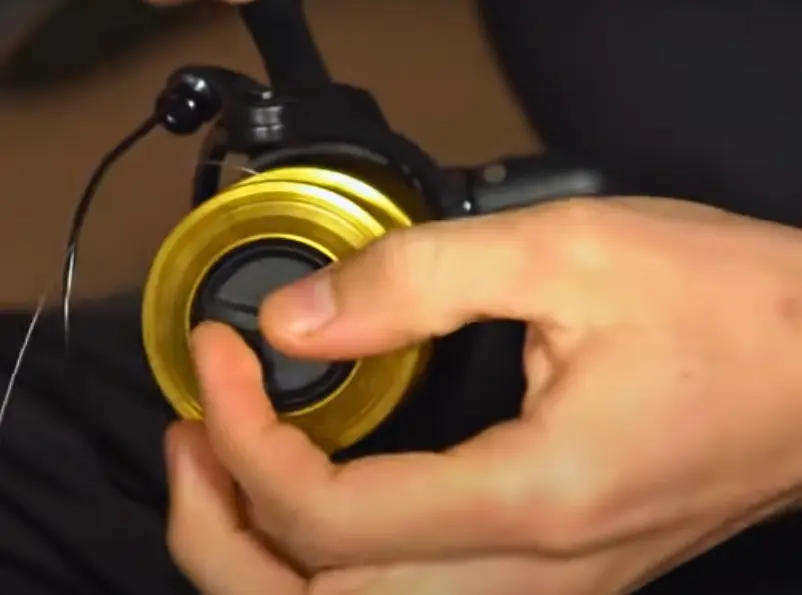
After tying an overhand knot, close the bail and check out the spool position to escape from mangles and rude lines. Also, make sure to tighten the drag to the right side.
Hot Tip: One frustration-free trick is to close the bail by hand during every cast, but using your handle for closing your bail will creates slack on your fishing line.
Add tension to the line and start lining
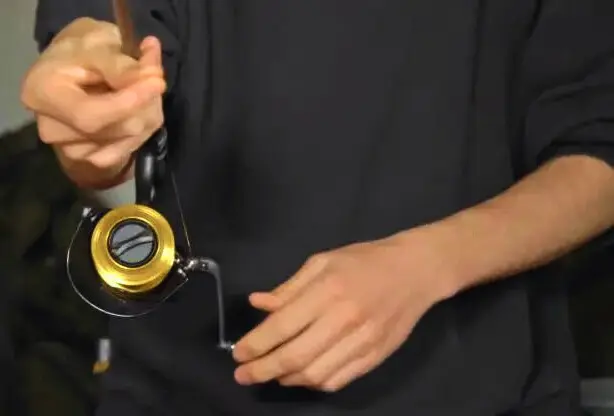
After making all the adjustments, it’s time to spool a fishing line into the reel. How does it perfectly work? Hold the line near your first guide with your non-dominant hand with a wet towel or cloth, and start winding the line and putting gentle pressure on your index finger and thumb.
Hot Tip: Crank the handle 20 times and then stop every 20-30 cranks to check the line twists. If any twists happen, untwist the line and start spooling again.
If you want to prevent line twists, follow these hacks:
- Open a book and pass the fishing line through it to reel close it, and start spooling.
- Hold the line spool with a screwdriver.
- Fill up the fishing line with a Bees Knees reel spooler or Line Winder and get even lines without any bumps.
Optimal level filling
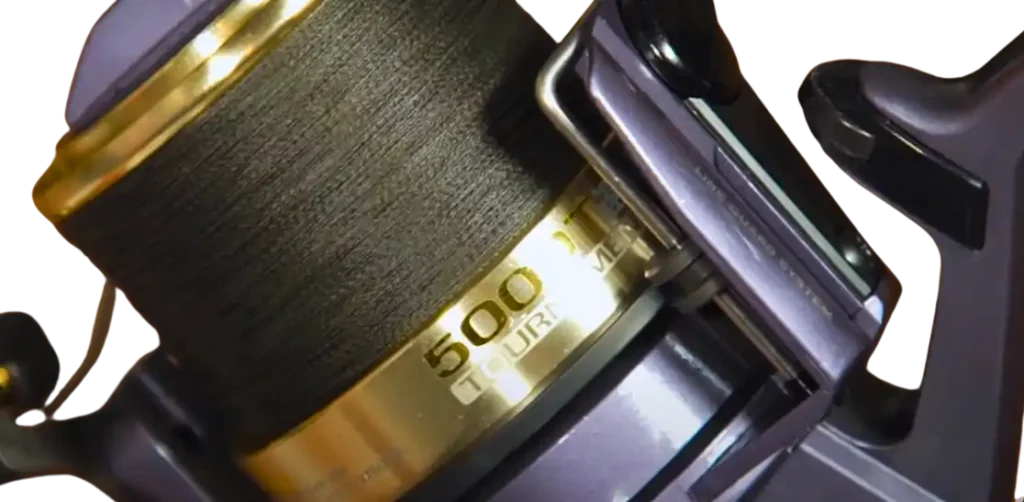
Fill the spinning reel spool until it is far away, 1/8 inch or 0.04 meters from the rim. Regularize the correct amount of spooling. If you spool less line, the casting distance reduces, and there is a risk of more backlashes. On the contrary, spooling more lines diminishes retrieval rate and casting accuracy and wastage of lines.
Snip extra line
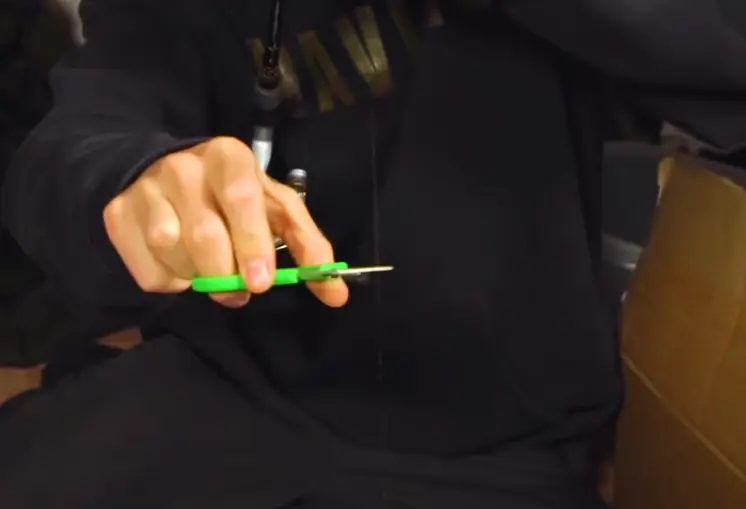
Once you have loaded the reel, trim the reel from the spool, leaving enough for future re-spooling or changes, and secure it with a lure, line clip, rubber band, swivel, or line keeper.
Hot Tip: As you spool braided line on your reel, and if you are going to make fishing in clear water, add more backing with a monofilament or fluorocarbon line to snare a fish.
Final checks
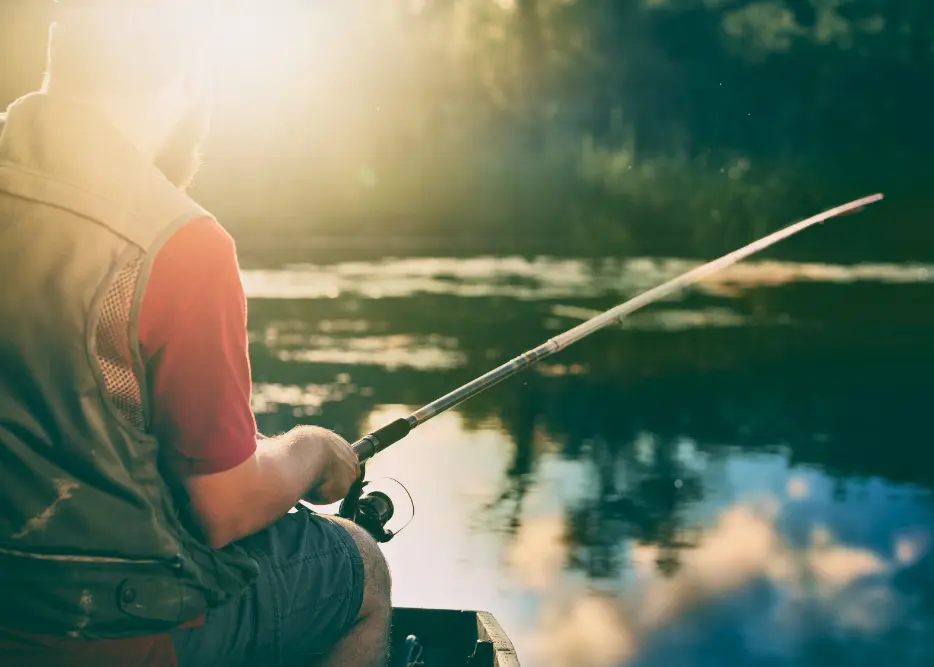
Make a few test casts to ensure the line flows smoothly without any coil and uneven winding. Address any issue before you embark on fishing to save yourself from later frustration.
Hot Tip: Check out terminal tackle, knots on guides, line placement, and retrieve test at your backyard, home, or tackle preparation area to cast better actual at the water.
How to put a fishing line on a Baitcaster Reel?
Loading a fishing line to a bait caster reel needs much attention and precision, but with due care, you can achieve the results accurately. My simple method is:
Step1: Take a bait caster rod and 30-pound fishing line (braid/ Monofilament/fluorocarbon).
Step 2: Run the line through the first guide of a rod and stick it to the eye of the spool first.
Step 3: A hole mechanism is in the middle of the spool. Insert the line in one hole and drag it to come off from another. Tie an overhand knot, make it as tight as possible, and cut the extra line with the cutter. Secure the knot by putting on electrical or masking tape; if not in reach, practice my trick of sticking the spool’s sticker on it.
Step 4: Next, I hold the main line in my fingers, usually up to 12 inches above my reel, and slowly spin the reel by putting pressure with one hand. (not squeeze too tight).
Hot tip: tightened the drag system of the bait caster; otherwise, the handle moves freely with line tangles. Turn the brake system on a clockwise position to tighten it also.
Step 5: Leave some centimeter space on the spool and go down the line to all of the guides.
Step 6: Add mono/fluoro as backing by tightening both lines with double-end knots. Put on lures like jigs, live baits, or soft plastic worms on a backing line.
How to put a fishing line on a Spincast/ Closed-faced reel?
The basic idea of the Spincast reel goes back to Holden Illingworth in 1905, but commercially, it was introduced by Denison-Johnson Reel Company in 1949, but still, it is a favorite reel of all time for anglers. It is widely favored because of the button to control the cast and drag adjustment underside to control fish resistance; it is mainly used on spinning rods, it is simple to use, budget-friendly, and most of the time used to catch crappie, bluegill or other pan-fish. If you are looking for an accurate method of spooling fishing lines on a closed-faced reel, study this guide.
Step1: First, remove the nose cone of a closed-faced reel by turning it clockwise, and you can see the spool now.
Hot tip: Some Spincast reel comes with a single hook-up pin on the side of the spool, but you must make sure to buy two-sided hook-up pins because it takes less time to grab a line during the retrieval.
Step 2: Take a fishing line and insert it through the first guide of the rod. I usually use COPOLYMER (10-pound braided line), but as a backup, I thoroughly used the Trilene XL mono line; after a long discussion with my fellow angler, I confessed to using OMNI-FLEX (30lb) and decided to use this every time.
Step 3: Ring the line through the nose cone (that has already been removed), tie an overhand knot on the spool body, and fit it solidly.
Step 4: Put back the nose cone and tighten it.
Step 5: Pinch the line between your index finger and put a little pressure to avoid any twist while spooling a line.
Step 6: After lining about 70 yards, cut the extra line with scissors and secure it with a lure. Sometimes, if I try the monofilament line, I fill it 40-50 meters.
How to put a fishing line on a fly reel?
Fly fishing is primarily different from other fishing techniques. The spinning or baitcasting reels are very thin, but in fly fishing, we use a weighted fly line and transfer energy through your hands and rods to fish, and it is done by flying the reel back and forth to catch a fish.
For fly fishing, use a fly rod and reel by considering their performance and price. One drawback of a fly reel is that it can get worn out due to wet lines and moisture on the reel. They come in single-action with a gear ratio of 1:1, mostly for left-hand retrieve, and work well to catch small to big fish.
Here is a quick guide to spooling fly lines on a fly reel.
Step1: Gather all the supplies for spooling a fly line to reel, including a fly rod, a pencil/ line winder, a milk carton, a backing line, a fly line, and a scissor.
Hot tip: Take a 20-30 pound (20ft) backing line, 4ft tippet line, or 7-9 ft leader line.
Step 2: Separate the spool from the reel and turn the backing line three times around the spool.
Step 3: Tie a uni or overhead knot ( my typical knotting method on the fly reel is an Albright knot) and push the reel to tighten it fully. Trim any excess line.
Step 4: Attach the spool back to the reel.
Step 5: Take a milk carton or a lift box, make holes on both sides and insert the pencil middle between the holes by sliding the spool on a pencil.
Step 6: Attach a fly reel to the fly rod and keep it upward to lay more tension on a backing line.
Step 7: Start reeling the line by holding the line with your finger to minimize twists.
Step 8: Cut the backing line and tie a double overhand knot on a fly line.
Step 9: Pull off the 18-foot line from the reel to check out any twist and see how it comes off. Add leader line.
FAQ’s
What are some of your expert tips for spooling a fishing line on all reel types?
Answer: As we learn from our mistakes, now, after having 20 years of experience in all types of fishing series, we try to make you comfortable with fishing, too. My tips are:
- Reel the line in the same direction where it comes on from the fishing line spool.
- After a child day with your spool out, check out any dust, abrasion, rust, and moisture and clear it to run your line longer.
- Use line weight according to the specification inscribed on the spool. Never try to put a 30lb line if your reel can hold only a 10lb line test.
- Always put the cheaper line as backing and the mainline on top to save extra bucks.
- Grease the handle, bail, and internal gears before lining a fishing line to lessen the chances of uneven line filling. Jason advocates using the KVD line and lures spray (line conditioner) to avert line twists.
Can I use an old fishing line, or would it be better to replace it?
Answer: You should use a new fishing line after every season because the old line may crash and become brittle, affecting your casting.
How do we prevent line twists during spooling?
Answer: The formula needs to be more undemanding. Apply gentle tension on the line during winding, fill the line as per instructions, and use a pencil or a line winder to facilitate plain-sailing spooling.
Can I spool the fishing line at home by myself?
Answer: Yes! Spooling a fishing line is not such a big deal. You need expert tips from anglers, research your topic on Google or YouTube, and apply their techniques while putting on lines.
Final opinion
Spooling a fishing line is not just filling up a reel – You are filling your best moment on the water with the potential of adventure. By following my expert advice, you can make this little bit trickier method fun and able to write water stories for your generation because loading a line means weaving the thread of your angling legacy.
